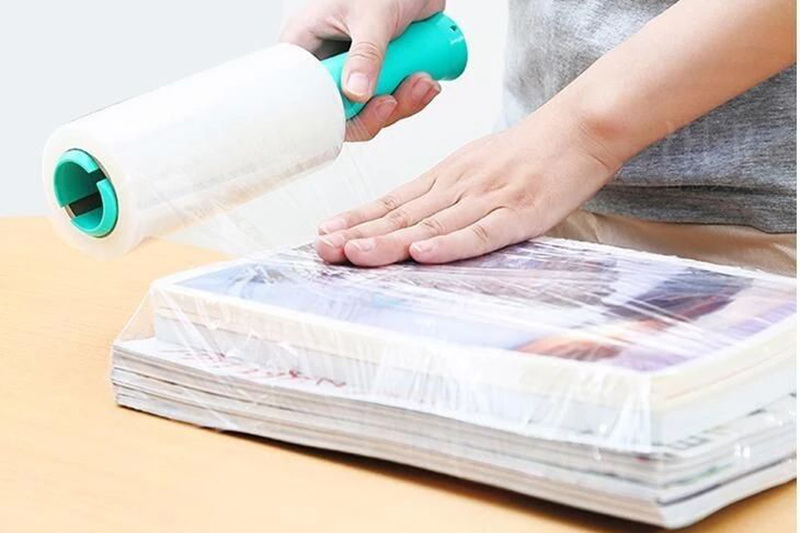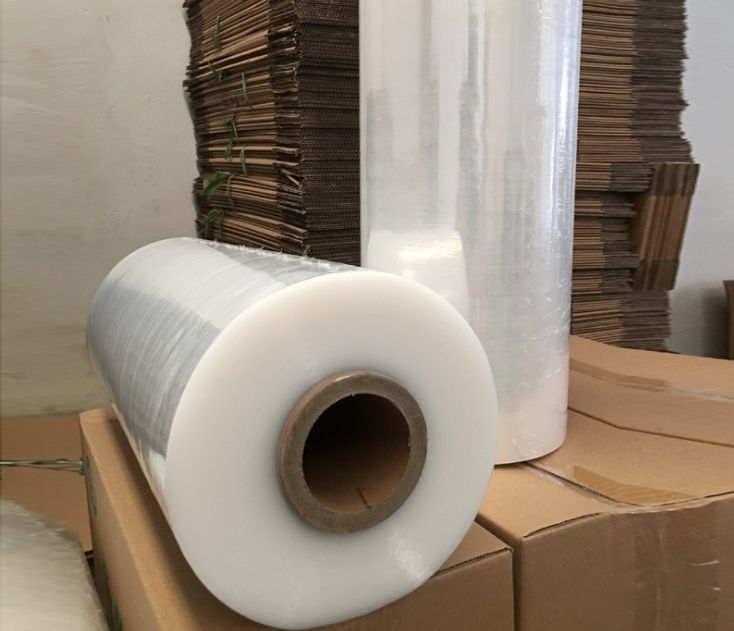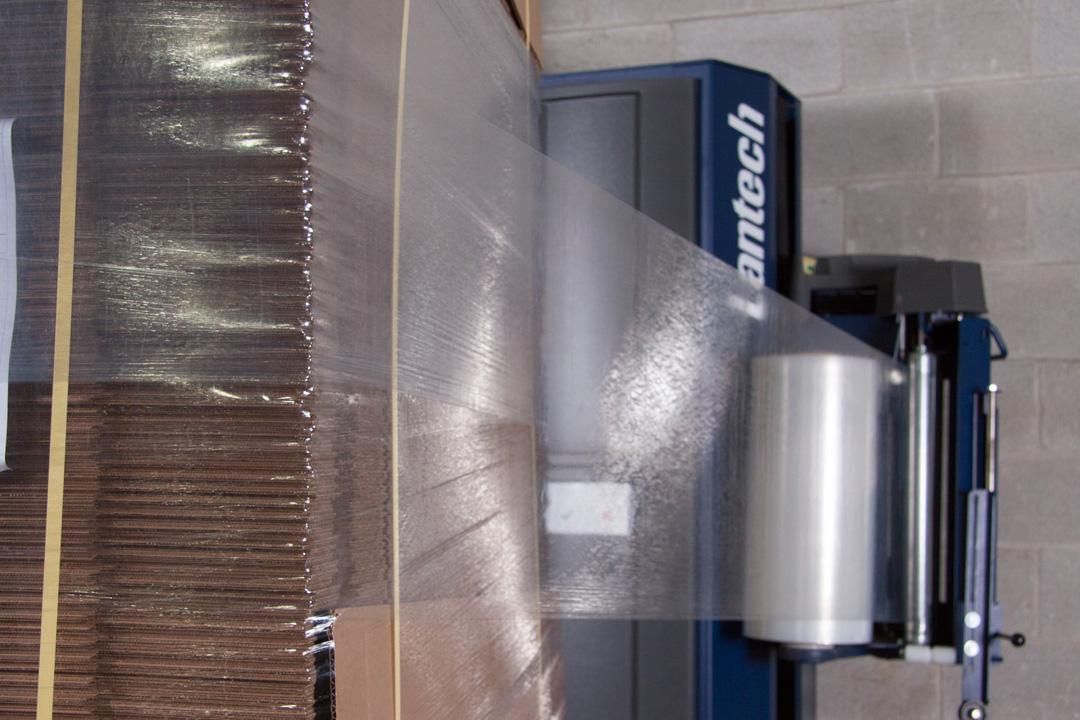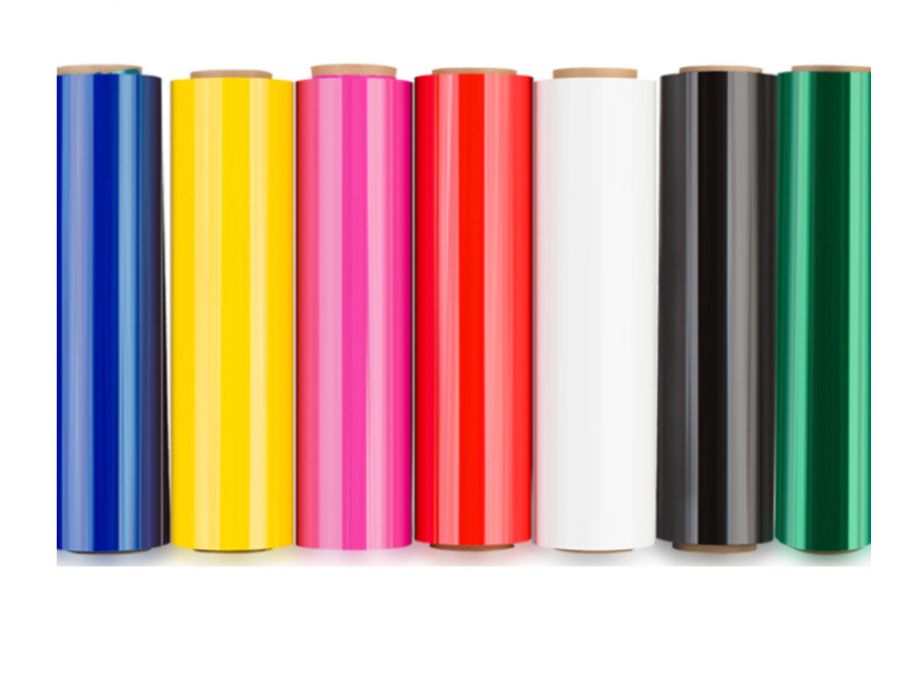
1.PE Stretch Film Definition
PE stretch film (also known as stretch wrap) is a plastic film with self-adhesive properties that can be stretched and tightly wrapped around goods, either on one side (extrusion) or both sides (blown). The adhesive does not adhere to the surface of the goods but remains on the film's surface. It does not require heat shrinking during the packaging process, which helps save energy, reduce packaging costs, facilitate container transport, and improve logistics efficiency. The combination of pallets and forklifts reduces transportation costs, and high transparency facilitates the identification of goods, reducing distribution errors.
Specifications: Machine film width 500mm, manual film width 300mm, 350mm, 450mm, 500mm, thickness 15um-50um, can be slit into various specifications.
2.Classification of PE Stretch Film Use
(1)Manual Stretch Film: This method mainly uses manual packaging, and manual stretch film generally has lower quality requirements. Each roll weighs around 4kg or 5kg for ease of operation.


(2)Machine Stretch Film: Machine stretch film is used for mechanical packaging, mainly driven by the movement of goods to achieve packaging. It requires higher tensile strength and stretchability of the film.
The general stretch rate is 300%, and the roll weight is 15kg.
(3)Machine Pre-stretch Film: This type of stretch film is mainly used for mechanical packaging. During packaging, the packaging machine first stretches the film to a certain ratio and then wraps it around the goods to be packaged. It relies on the film's elasticity to compactly package the goods. The product has high tensile strength, elongation, and puncture resistance.


(4)Colored Film: Colored stretch films are available in blue, red, yellow, green, and black. Manufacturers use them to package goods while distinguishing between different products, making it easier to identify goods.
3.Control of PE Stretch Film Adhesiveness
Good adhesiveness ensures that the outer layers of packaging film adhere to each other, providing surface protection for products and forming a lightweight protective outer layer around the products. This helps prevent dust, oil, moisture, water, and theft. Importantly, stretch film packaging evenly distributes force around the packaged items, preventing uneven stress that could cause damage to the products, which is not achievable with traditional packaging methods such as strapping, bundling, and tape.
The methods to achieve adhesiveness mainly include two types: one is to add PIB or its master batch to the polymer, and the other is to mix with VLDPE.
(1) PIB is a semi-transparent, viscous liquid. Direct addition requires special equipment or modification of equipment. Generally, PIB masterbatch is used. PIB has a migration process, which usually takes three days, and is also affected by temperature. It has strong adhesiveness at high temperatures and less adhesiveness at low temperatures. After stretching, its adhesiveness decreases significantly. Therefore, the finished film is best stored within a certain temperature range (recommended storage temperature: 15°C to 25°C).
(2) Mixing with VLDPE has slightly lower adhesiveness but does not require special equipment. Adhesiveness is relatively stable, not subject to time constraints, but is also affected by temperature. It is relatively adhesive at temperatures above 30°C and less adhesive at temperatures below 15°C. Adjusting the amount of LLDPE in the adhesive layer can achieve the desired viscosity. This method is often used for three-layer co-extrusion films.
4.Characteristics of PE Stretch Film
(1)Unitization: This is one of the biggest characteristics of stretch film packaging, which tightly binds products into a compact, fixed unit, even under adverse conditions, preventing any loosening or separation of products. The packaging does not have sharp edges or stickiness, thus avoiding damage.
(2)Primary Protection: Primary protection provides surface protection for products, creating a lightweight protective exterior. It prevents dust, oil, moisture, water, and theft. Stretch film packaging evenly distributes force around the packaged items, preventing displacement and movement during transportation, especially in the tobacco and textile industries, where it has unique packaging effects.
(3)Cost Savings: Using stretch film for product packaging can effectively reduce usage costs. Stretch film consumes only about 15% of the original box packaging, about 35% of heat-shrink film, and about 50% of cardboard box packaging. It also reduces labor intensity, improves packaging efficiency, and enhances packaging grades.
In summary, the application field of stretch film is very extensive, with many areas in China yet to be explored, and many areas that have been explored not yet widely used. As the application field expands, the use of stretch film will increase significantly, and its market potential is immeasurable. Therefore, it is necessary to vigorously promote the production and application of stretch film.
5.Applications of PE Stretch Film
PE stretch film has high tensile strength, tear resistance, transparency, and excellent recovery properties. With a pre-stretch ratio of 400%, it can be used for containerization, waterproofing, dust-proofing, anti-scattering, and anti-theft purposes.
Uses: It is used for pallet wrapping and other wrapping packaging and is widely used in foreign trade exports, bottle and can manufacturing, paper-making, hardware and electrical appliances, plastics, chemicals, building materials, agricultural products, food, and other industries.
Post time: Oct-25-2023
